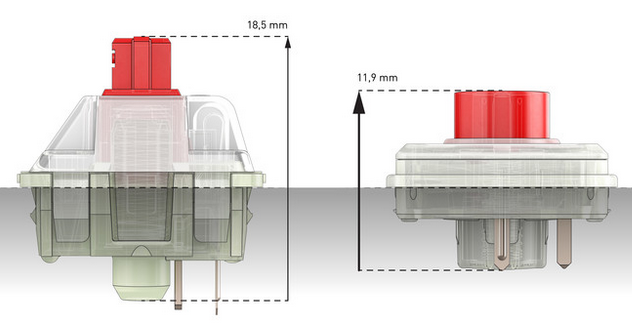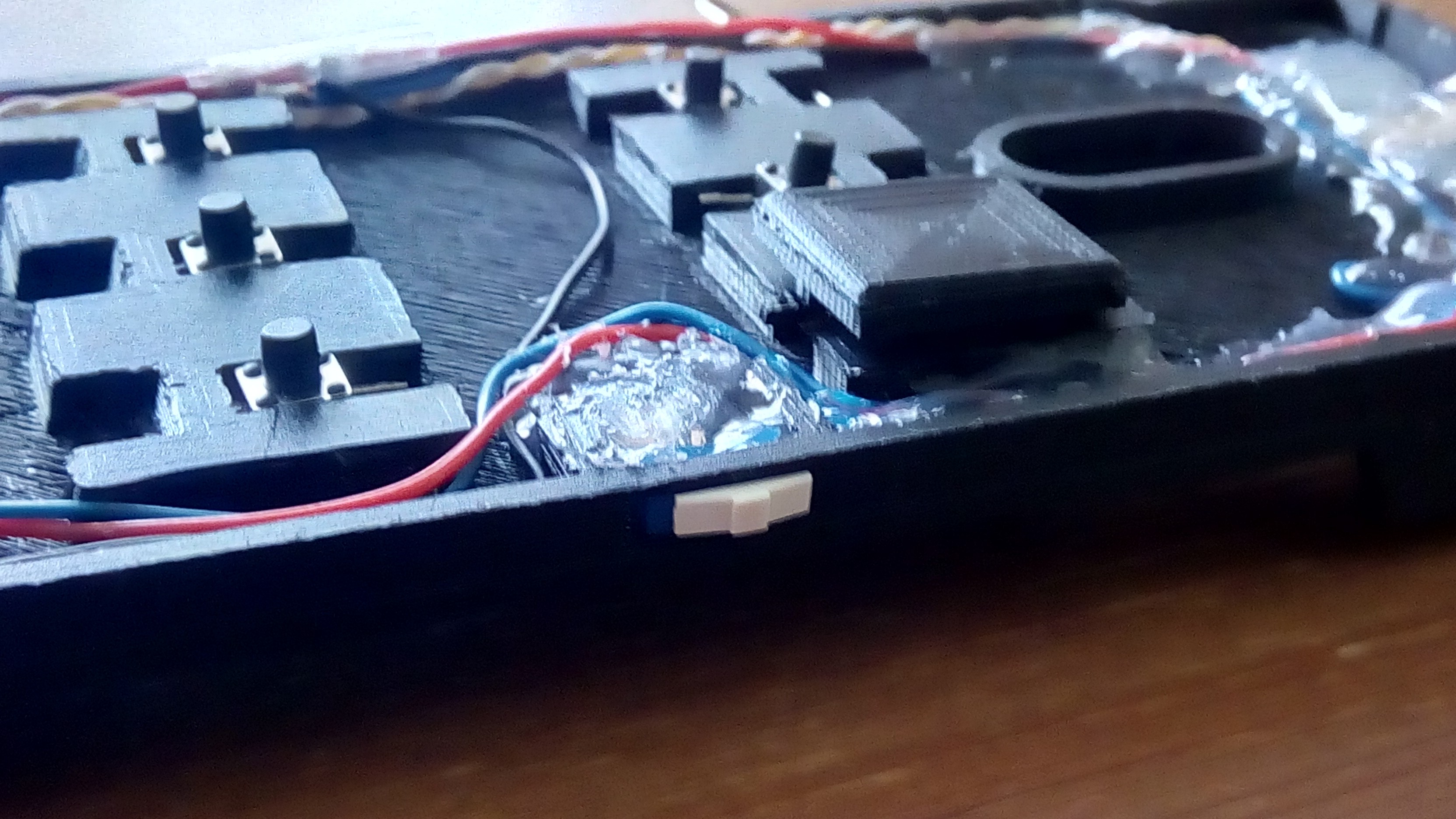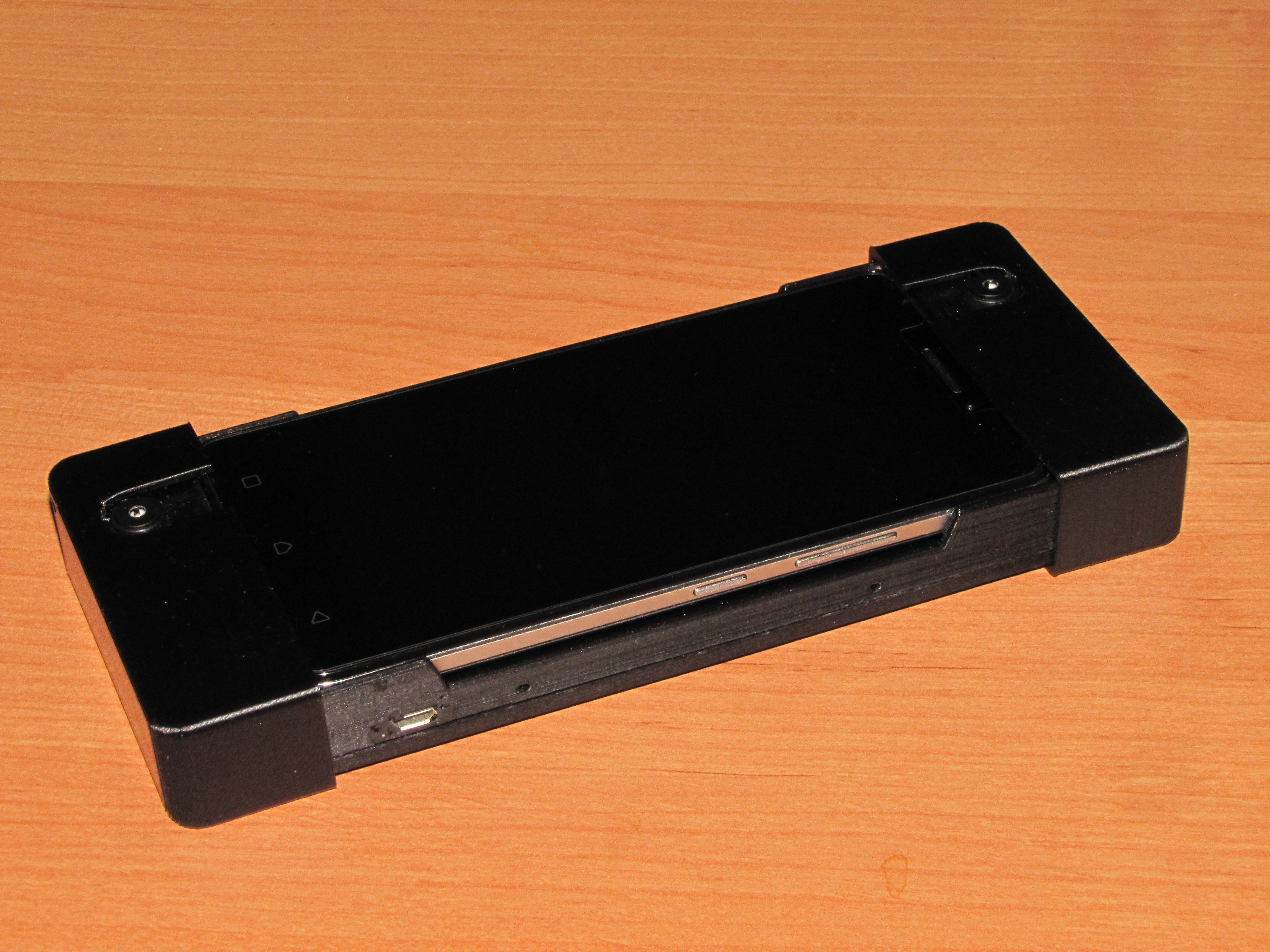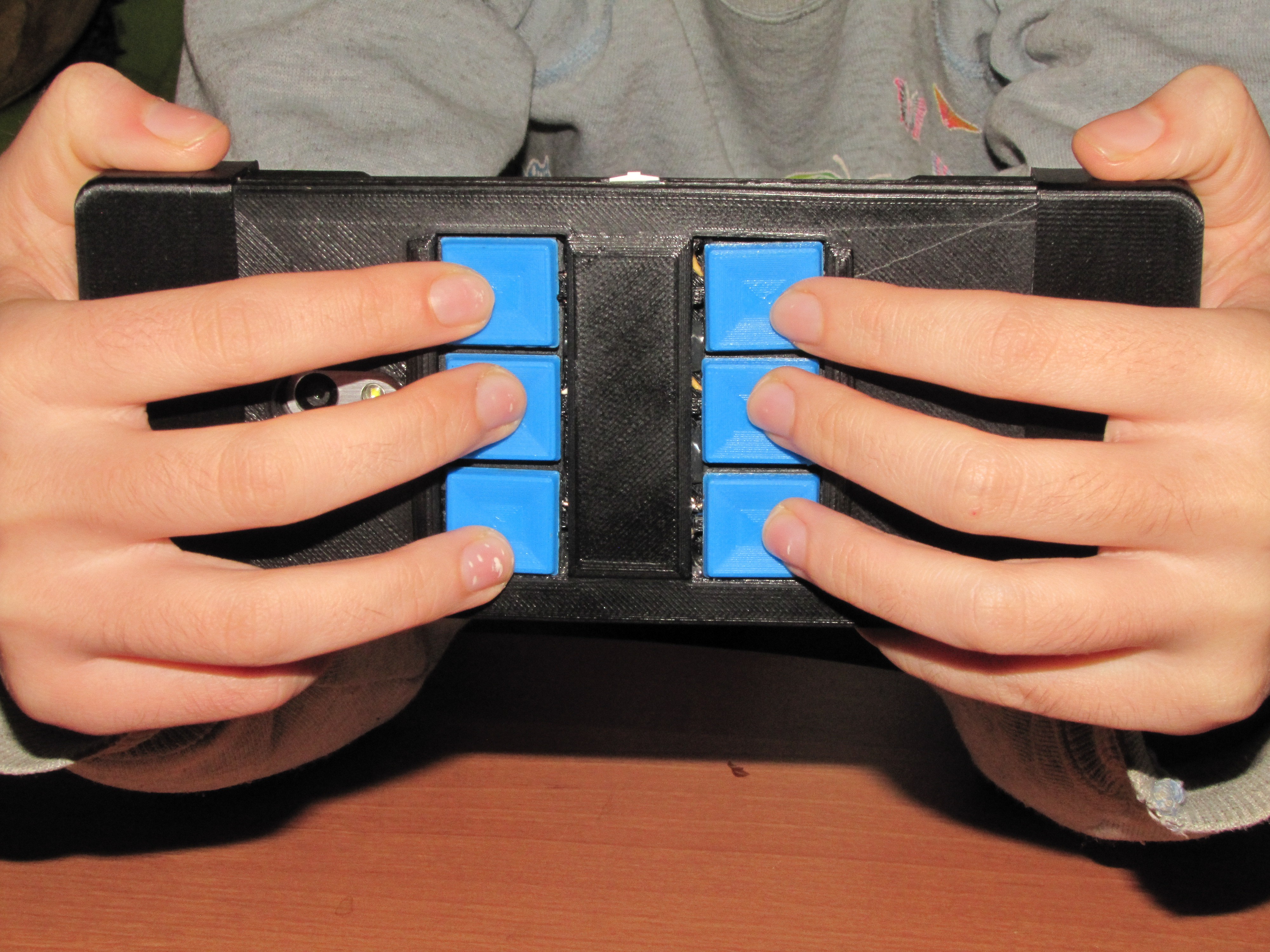Based on the evaluation from of the first prototype, the 12 mm dome switches have been scrapped.
I gave a quick check to new Cherry MX low profile RGB:
 These are made for laptop keyboards and exceptionally good, but 11.9 mm height is a bit thick for a tablet or phone. Maybe, next project.
These are made for laptop keyboards and exceptionally good, but 11.9 mm height is a bit thick for a tablet or phone. Maybe, next project.The second prototype is based around the 6x6 dome switches, which are much lighter than the 12x12 -- only between 15 and 18 gram force is required for closure. Above the switches, a hinged button is installed. I also finalized the cradle horizontal dimensions and the placement of the thumb Shifters. For faster prototyping, there is no PCB (and a lot of wires and hot glue) in this version.

The switches are covered with hinged caps. This is different from the implementation of Vijay, who used the same switches covered with silicone push buttons and plastic covers (check https://hackaday.io/project/21175-tipo-braille-smartphone-keypad)
 Finally, my second working prototype looked like this. And yes, the draft of this text was typed into the phone! (Upright view)
Finally, my second working prototype looked like this. And yes, the draft of this text was typed into the phone! (Upright view)

The case is made of two half-shells, two handles, and six buttons, all printed (for now) with PLA. Printer step is 0.2 mm, takes about 6 hrs in total for all parts. Note that I messed the charging port hole slightly and had to do a quick fix with molten filament. Two holes in the bottom are for the buttons' hinges.
(Back side view)

Top of the cradle has a separate switch for the keyboard. The phone can be charged while in the cradle. If the charger is inserted, the keyboard is always on, independent of the switch.
While typing the phone is held predominantly in a horizontal position as shown here:

The buttons provide sufficient tactile feedback, so quick notes can be typed without constantly looking at the screen. Or even without looking at all. Of course, there are typos, but try this trick on an on-screen keyboard.
The prototype dimensions are 190x80x24 mm (including the handles). The cradle is 46 mm longer, 5 mm wider and 14 mm thicker than the selected phone. The initial testing indicates the length of 190 is comfortable for prolonged typing, and the user's hands don't overlap the screen. By using a PCB in the next prototype, the overall cradle thickness should be reduced to 18 mm, making it only 8 mm thicker than the phone.
As expected, the cheap 6x6 dome switches feel... well: cheap and uncomfortable. The mechanical key caps are far better than silicone pads (try typing on a TV remote!), but still don't have the tactile feedback of an MX Cherry. For now, I will "type the prototype" and wait on the photo-interrupters from Aliexpress. Yes, the next version will have an optical keyboard!
Before the parts arrive, there is an opportunity to do some testing and chase the bugs.
 ptrav
ptrav
Discussions
Become a Hackaday.io Member
Create an account to leave a comment. Already have an account? Log In.